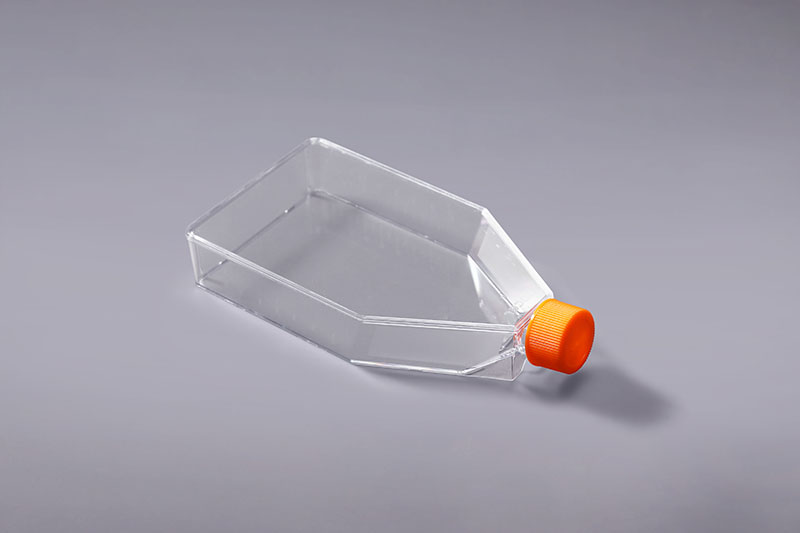계대배양이란 배양물을 작은 부분으로 나누어 다른 배양 용기(병)에 다시 접종한 후 배양하는 과정을 말합니다. 세포 배양 플라스크은(는) 세포를 배양할 때 일반적으로 사용되는 소모품입니다. 그래서, 어떻게 플라스크의 세포를 계대 배양합니까?
일반적으로 세포 배양 플라스크의 세포는 조밀한 단층으로 자라며 기본적으로 포화 상태입니다. 세포가 계속해서 번식하고 세포 수를 확장할 수 있도록 하려면 계대 작업을 수행해야 합니다. 부유 세포는 직접 분리될 수 있지만 부착 세포는 분리되기 전에 분해되어야 합니다. 일반적으로 단백질 분해 효소(예: 트립신)는 부착된 세포를 단일 세포로 소화하는 데 사용됩니다. 소화를 개선하기 위해 에틸렌디아민테트라아세트산(EDTA)을 첨가할 수도 있습니다. 세포가 둥글고 병 벽에서 분리될 때까지 세포를 관찰합니다. 이 프로세스는 종종 5-15분이 걸립니다. 세포 덩어리를 피하기 위해 세포를 소화하는 과정에서 세포 배양 플라스크를 두드리지 마십시오.
특히 소화하기 어려운 세포의 경우 트립신 EDTA 소화 용액을 추가하고 세포를 37°C에서 소화를 촉진합니다. 세포가 병 벽에서 분리된 후 즉시 혈청이 포함된 완전한 배지를 추가하여 소화를 중지합니다. 혈청의 특정 단백질은 췌장을 억제할 수 있습니다. 효소 활동. 일반적으로 원심분리는 필요하지 않습니다. 세포에 무혈청 또는 저혈청 배지가 필요한 경우 125000g에서 5분 동안 원심분리한 다음 중단된 배지를 버리고 적절한 새 배지를 추가하고 계대배양 전에 세포를 부드럽게 혼합합니다.
세포 계대 비율은 일반적으로 1:2입니다. -1:20, 세포 유형에 따라 다릅니다. 통과 과정에서 트립신은 일부 세포의 세포막을 손상시킵니다. 세포 스크레이퍼를 사용하여 세포를 부드럽게 긁어내고, 적절한 양의 배지를 추가하고, 조심스럽게 피펫으로 세포를 혼합하고, 새 배양 플라스크로 옮길 수 있습니다.
The FAI climbed 5.9 percent year-on-year in the first 11 months of 2018, quickening from the 5.7-percent growth in Jan-Oct, the National Bureau of Statistics (NBS) said Friday in an online statement.
The key indicator of investment, dubbed a major growth driver, hit the bottom in August and has since started to rebound steadily.
In the face of emerging economic challenges home and abroad, China has stepped up efforts to stabilize investment, in particular rolling out measures to motivate private investors and channel funds into infrastructure.
Friday's data showed private investment, accounting for more than 60 percent of the total FAI, expanded by a brisk 8.7 percent.
NBS spokesperson Mao Shengyong said funds into weak economic links registered rapid increases as investment in environmental protection and agriculture jumped 42 percent and 12.5 percent respectively, much faster than the average.
In breakdown, investment in high-tech and equipment manufacturing remained vigorous with 16.1-percent and 11.6-percent increases respectively in the first 11 months. Infrastructure investment gained 3.7 percent, staying flat. Investment in property development rose 9.7 percent, also unchanged.
 English
English



















































